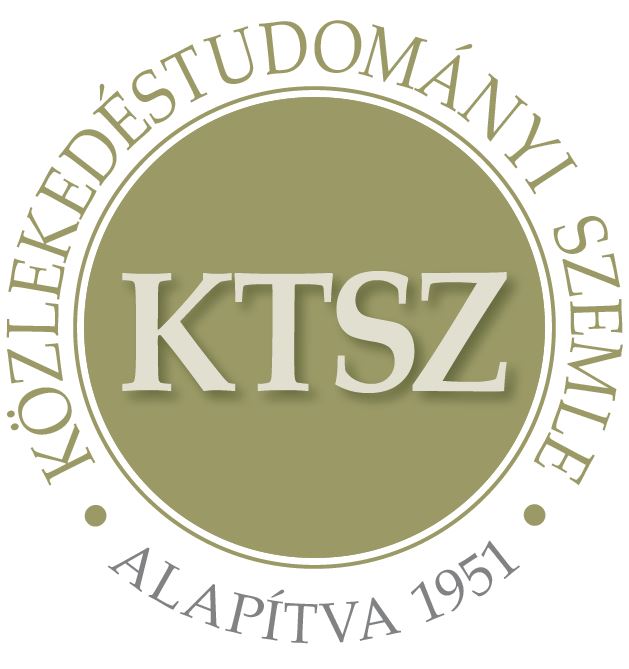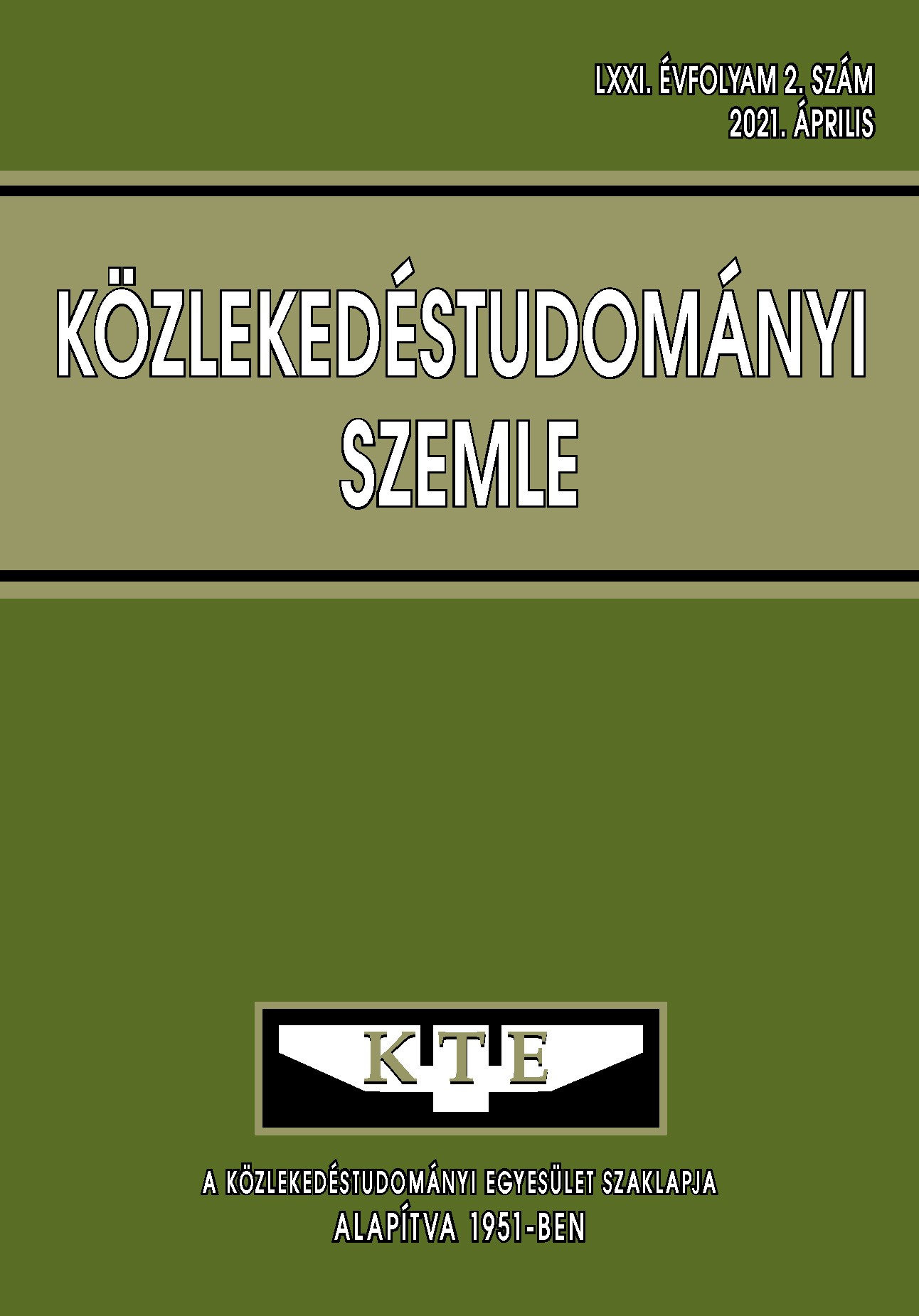Dynamic wheel load measuremasurement in road traffic
Abstract
From the acceleration measurement data, the amount of load acting on the wheel of the vehicle can be determined, which is transferred to the asphalt pavement damaging the track structure. The magnitude of the load is affected by the speed of the vehicle and the surface quality of the pavement. Various mathematical models are applied to calculate the remaining life of pavement structures, depending on the available data. The aim of the research is to develop a measurement method for determining the dynamic wheel load required for estimating the remaining service life.
References
Nemesdy Ervin, Ambrus Kálmán, Pallós Imre, and Török Kálmán, ‘Az aszfaltkeverékek mechanikai, és fizikai tulajdonságainak laboratóriumi vizsgálatai’, 2000.
M. Gergely, P. Péter, and P. József, ‘Hajlékony útburkolatok élettartamának meghatározása a továbbfejlesztett kézi behajlásmérés alkalmazásával’, Konf. Kiadv., Oct. 2011.
Gáspár László, Horváth Ferenc, and Lublóy László, Közlekedési létesítmények élettartama. Győr: Universitas-Győr Nonprofit Kft., 2011.
Albert J., Bush III, and Gilbert Y. Baladi, Nondestructive Testing of Pavement and Backcalculation of Moduli. Philadelphia, PA 19103, 1989.
M. Doumiati, A. Victorino, A. Charara, G. Baffet, and D. Lechner, ‘An estimation process for vehicle wheel-ground
contact normal forces’, Proceedings of the 17th World Congress The International Federation of Automatic Control, pp. 6–11, 2008. DOI: https://doi.org/10.3182/20080706-5-KR-1001.01205
D. Lechner, ‘Analyse du comportement dynamique des vehicules routiers l´egers: d´eveloppement d’une m´ethodologie appliqu´ee `a la s´ecurit´e primaire.’, Ph. D, dissertation Ecole Centrale de Lyon, France, 2002.
T. Shim and C. Ghike, ‘Understanding the limitations of different vehicle models for roll dynamics studies.’, Vehicle System Dynamics, vol. 45, pp. 191–216, 2007. DOI: https://doi.org/10.1080/00423110600882449
U. Kiencke and L. Nielsen, ‘Automotive control systems’, Springer, 2000.
T. A. Wenzel, K. J. Burnham, M. V. Blundell, and R. A. Williams, ‘Dual extended Kalman filter for vehicle state and parameter estimation.’, vol. 44, pp. 153–171, 2006. DOI: https://doi.org/10.1080/00423110500385949
Vásárhelyi Boldizsár, Közúti közlekedésünk és útjaink helyzete, In:Építés- és Közlekedéstudományi Közlemények, vol. 1. Budapest: Akadémiai kiadó, 1958.
T. Boromisza, ‘Aszfaltburkolatú utak teherbírásának vizsgálata behajlásméréssel, In: Mélyépítéstudományi Szemle’, vol. XXVI., no. 12, pp. 521–528, 1976.
Ilosvai Lajos, ‘Gépjárművek tervezése és vizsgálata III. Kézirat’, pp. 126. Budapest, 1983.
Articles published electronically are open access (OJS), freely available online and can be downloaded. Authors of articles are not charged any publication or publishing costs (APC). Users have the right to read, download, copy, print, and search the articles, or share the full text with a link.
Authors must declare that their submission has not been previously published in another journal, that financial support has been acknowledged, and that the list of references is complete and accurate, including specification of URLs and DOIs (if available). When submitting a draft article, each author approves the submitted version. Authors guarantee that the article is their original work. Authors are required to participate in the peer review process, follow the advice of reviewers, meet the prescribed deadlines, and, if any, withdraw the submission or correct errors.
All submitted articles are subject to peer review, where the editors request an independent evaluation from at least one expert, ensuring that the reviewer(s) have no conflicts of interest with the authors. The final decision is made by the Editor-in-Chief, who takes into account the evaluations and the suggestions of the editors. The editors and reviewers treat the submission confidentially.
The publisher and editors are committed to maintaining high ethical standards and to preventing publications that involve research misconduct. They follow the COPE guidelines on such ethical issues.
The authors retain copyright and grant the journal the right of first publication under the Creative Commons License (https://creativecommons.org/licenses/by-nc-nd/4.0), which allows others to share the work, while acknowledging the authorship of the work and the first publication in the journal.
The journal archives all published articles, and the journal's owner, the Hungarian Society of Transportation Sciences, will continue to operate the database even if the journal ceases to be published.















